|
|
 |
Key to SileneView taxon page for Silene
(For a list of species in Silene, use the above link.) Jepson Manual glossary definitions can be seen by moving your cursor over words underlined with dots. 1. Annual, biennial, taproot generally slender 2. Calyx tube clearly 16–30-veined 3. Styles 5; petal limb ± entire  Having margins that are continuous and smooth (i.e., without teeth, lobes, etc.). to 2-lobed; fruit teeth 10; flower pistillate ..... S. latifolia (3) 3' Styles generally 3; petal limb entire to notched; fruit teeth 3; flower bisexual  Both male and female reproductive parts occurring and functional in the same plant or structure (e.g., flower, spikelet, inflorescence). 2' Calyx tube clearly 10-veined 6. Pedicels 0–5 mm; flowers generally 1 per node  Position on a stem from which one or more structures (especially leaves, buds, branches, or flowers) arise. ; inflorescence ± 1-sided 7. Calyx densely short-hairy, not glandular; petal limb 5–12 mm, lobed >= 1/2 length; styles exserted  Protruding out of surrounding structure(s) (e.g., stamens exserted from corolla). ; inflorescence bracts thin, ± translucent ..... S. dichotoma subsp. dichotoma 7' Calyx glandular-hairy especially on veins; petal limb 2–5 mm, entire to notched; styles included 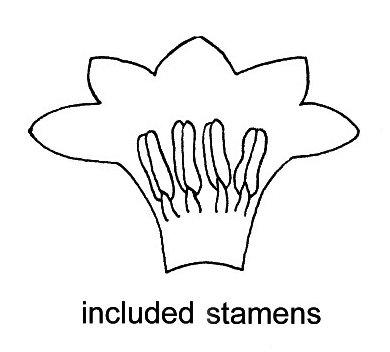 Not protruding out of surrounding structure(s) (e.g., stamens included in corolla). ; inflorescence bracts thick, opaque ..... S. gallica 6' Some pedicels  Stalk of an individual flower in an inflorescence, or the corresponding structure in fruit. > 5 mm; some nodes  Position on a stem from which one or more structures (especially leaves, buds, branches, or flowers) arise. with 2–3 flowers; inflorescence not 1-sided 8. Petals bright pink; calyx lobes  1. A major expansion or bulge, such as on the margin of a leaf, sepal, or petal, or on the surface of an ovary. 2. The free tips of otherwise fused structures, such as sepals or petals; larger than teeth. 2–3 mm ..... [S. pseudatocion] 8' Petals white, yellow-white, or ± pink; calyx lobes 3–13 mm 9. Calyx tube veins not clearly net-like, lobes generally 3–6 mm, acute  Having a short-tapered, sharp tip, the sides convex or straight and converging at less than a right angle. to acuminate  Having a long-tapered, sharp tip, the sides concave. ; flowers staminate ..... S. latifolia (3) 9' Calyx tube veins net-like above middle, lobes 6–13 mm, generally long-tapered; flowers bisexual ..... S. noctiflora 1' Perennial herb, from rhizome  1. In seed plants, stem that is often elongate, more or less horizontal, usually underground; distinguished from roots by bearing of leaves, leaf scars, axillary buds, etc. 2. In ferns, stem that is located underground, embedded in leaf litter, on rocks or in rock crevices, or on trees or tree branches, often scaly or hairy; distinguished from roots by bearing of fronds (roots rarely bear fronds), and their greater diameter. or simple 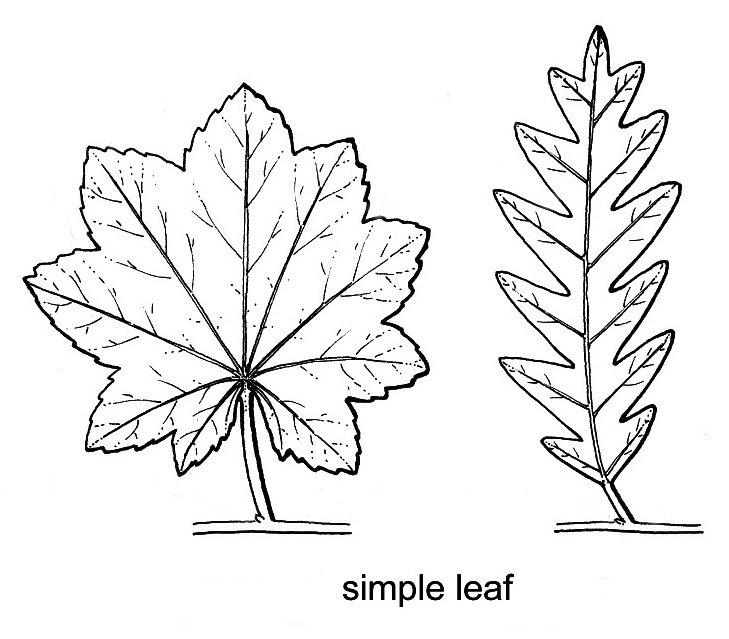 Composed of a single part; undivided; unbranched. to branched, woody caudex  Generally short, sometimes woody, more or less vertical stem of a perennial, at or beneath ground level. 12. Cauline leaves widely lanceolate  Narrowly elongate, widest in the basal half, often tapered to an acute tip. to ovate  Egg-shaped (i.e., widest below the middle) in two dimensions (i.e., in one plane), as a leaf. ; fruit ovoid ..... subsp. californica 12' Cauline leaves linear  Elongate, with nearly parallel sides; narrower than elliptic or oblong. to narrowly lanceolate; fruit ± oblong  Longer than wide, with nearly parallel sides; wider than linear. to ovoid ..... subsp. laciniata 10' Corolla white, ± red, purple, or yellow-white or -green to green 13. Calyx clearly ± inflated (papery in Silene vulgaris) 14' Calyx 7–10 mm, generally glabrous, faintly 10–15-veined, lobes 1–3 mm; fruit ± spheric ..... S. vulgaris 13' Calyx not clearly inflated or papery in fruit 15. Petal claw tapered  Gradually (not abruptly) narrower or smaller at base or tip. to limb; appendages 0 16. Calyx lobes 4–5 mm, slightly < tube; petal 4-lobed, claw ± fusiform  Elongate, widest at the middle, tapered to both ends. , short-woolly below middle; s SNH ..... S. aperta 16' Calyx lobes 1–2 mm, << tube; petals entire to slightly notched, claw gradually tapered to limb, glabrous to sparsely short-hairy below middle; KR, s CaRH, c&n SNH ..... S. invisa 15' Petal claw and limb junction generally abrupt, often narrowed; appendages 2–6, 0.5–4 mm 17. Petal limb 2-lobed, sometimes short-toothed near base 18. Basal, lower cauline leaves densely tufted, fleshy, linear to narrowly oblanceolate, generally < 40 mm, < 5 mm wide; flowering stems generally < 30 cm 19. Seeds 2–3 mm; calyx 8–10 mm; petal limb 3–5 mm; basal  At or near the base of a plant or plant part. Especially said of leaves clustered near the ground or of a placenta confined to the base of an ovary. leaves 1–5 mm wide ..... S. grayi (2) 19' Seeds 1–2 mm; calyx 9–15 mm; petal limb 2.5–3.5 mm; basal leaves 1.5–3.5 mm wide 20. Walls between calyx hair cells clear; plant 10–15(20) cm; calyx lobes 2–3 mm; SNH, SNE ..... S. sargentii 18' Basal leaves not densely tufted, not fleshy, generally lanceolate to oblanceolate, some > 30 mm, > 5 mm wide; some flowering stems > 30 cm 21' Petals > 10 mm, calyx 7–20 mm; petal appendages > 1 mm 22' Flowers spreading  Oriented more or less perpendicularly to the axis of attachment; often, more or less horizontal. to generally erect  Upright; vertically oriented. ; stamens, styles ± not exserted 23. Pedicel, calyx puberulent  Minutely hairy. , not glandular, rarely glabrous 24. Calyx base truncate  Abruptly (not gradually) narrower or smaller at base or tip, as if cut straight across or nearly so. to rounded in fruit; basal leaves, lower internodes  Segment of an axis (generally a stem) between successive positions (nodes) from which one or more structures (especially leaves, buds, branches, or flowers) arise. glabrous to sparsely puberulent ..... S. douglasii var. douglasii 24' Calyx base narrowed in fruit; basal leaves, lower internodes moderately to densely puberulent, ± finely scabrous or not ..... S. verecunda (2) 23' Pedicel, calyx glandular-puberulent to -hairy 25. Basal leaves mostly > 10 mm wide, oblanceolate, lanceolate, or elliptic  In the shape of a flattened circle or ellipse; wider than linear 26. Cauline leaves << basal leaves; cauline leaf  Organ arising from a stem, generally composed of a stalk (petiole) and a flat, expanded, green, photosynthetic area (blade); distinguished from a leaflet by the presence in its axil of a bud, branch, thorn, or flower; sometimes with lateral, basal appendages (stipules); either simple (toothed, lobed, or dissected but not divided into leaflets) or compound (divided into leaflets). pairs < 3; fruit stalk 1–2 mm, glabrous or sparsely puberulent; calyx lobe  1. A major expansion or bulge, such as on the margin of a leaf, sepal, or petal, or on the surface of an ovary. 2. The free tips of otherwise fused structures, such as sepals or petals; larger than teeth. veins wider than tube veins; > 1200 m ..... S. nuda 26' Cauline leaves gradually reduced upward; cauline leaf pairs > 4; fruit stalk 3–6 mm, puberulent to woolly; calyx lobe veins ± as wide as tube veins; < 300 m ..... S. scouleri subsp. scouleri 25' Basal, lower cauline leaves 0 or withering (if present, most < 10 mm wide, linear to narrowly oblanceolate) 27' Middle cauline leaves < 6 mm wide; calyx lobe margin membranous or generally translucent 28. Branches ± prostrate 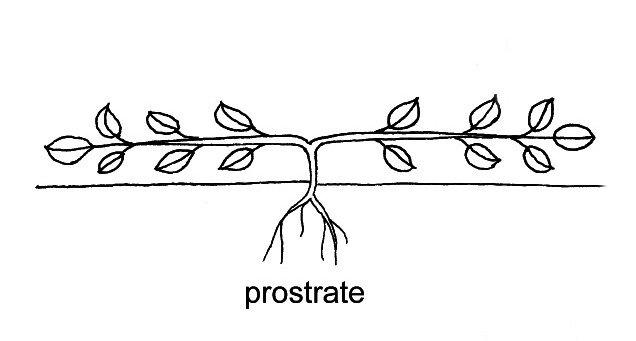 Lying flat on the ground. to ascending 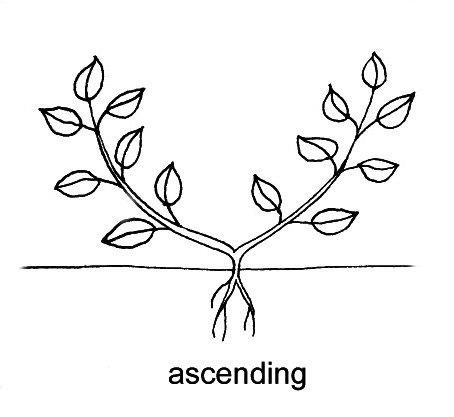 Curving or angling upward from base, or about 30-60 degrees less than vertical or away from axis of attachment. ; basal leaves (5)8–60 mm, hairs sticky-glandular throughout; flowering calyx ± inflated, generally reddish, lobes generally strongly keeled; alpine, SnBr (San Gorgonio Mtn) ..... S. krantzii 28' Branches ascending to erect; basal leaves to 100 mm, hairs non-glandular, at least in part; flowering calyx cylindric  Elongate, with parallel sides and, at any point, round in transverse section. to ± inflated, greenish to reddish, lobes generally not keeled; below treeline, widespread ..... S. verecunda (2) 17' Petal limb generally 4–8-lobed 29. Calyx 15–40 mm; corolla 20–30 mm 29' Calyx 5–20(25) mm; corolla generally < 20 mm (< 50 mm in Silene occidentalis) 31. Calyx tube generally <= 10 mm 32. Calyx tube cylindric, length > width; stamens, styles > petal claws; petal claw short-woolly ..... S. lemmonii 32' Calyx tube bell-shaped or elliptic, length ± = width; stamens, styles = to ± > petal claws; petal claw glabrous or ciliate  Having generally straight, conspicuous hairs along margins or edges. at base 33. Petals 5–11 mm, limb 2–4-lobed; fruit stalk glabrous; flowers generally ascending to erect; calyx lobes generally < 2 mm 34. Leaves linear to oblanceolate; internodes 2–3 × > leaves; calyx clearly veined; petal lobes 4, outer generally > inner ..... S. grayi (2) 34' Leaves lanceolate to elliptic; internodes < leaves; calyx faintly veined; petal lobes generally 2 ..... S. menziesii (2) 33' Petals 12–20 mm, limb 4–6(8)-lobed; fruit stalk puberulent; flowers nodding to ± spreading; calyx lobes 2–5 mm ..... S. greenei 31' Calyx tube generally > 10 mm 36. Flowers located well above cauline leaves; calyx short-glandular-hairy; petal limb 1/3–1/2 × claw, lobes < 8 mm 37' Fruit stalk 2–5 mm; petal limb 3–7 mm; calyx generally < 15(18) mm 38. Petal appendages 2, deeply cut or fringed  Having ragged or finely cut margins. ; petal claw, stamen base ciliate ..... S. bernardina 36' Upper cauline leaves generally overlapping or exceeding pedicels; calyx canescent to soft-white-hairy; petal limb ± = claw, lobes > 10 mm 39. Petal limb white; petal appendages 0 or inconspicuous, weakly developed, variable short teeth; petal limb lobed to base, inner lobes linear, generally > 10× longer than wide; petal base generally densely ciliate, filaments opposite 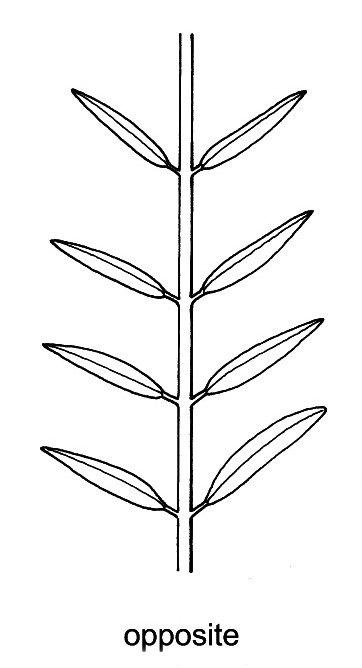 1. Arranged in pairs along an axis - e.g., two leaves per node. 2. Occurring in the same rank, directly above or below, as 'stamens opposite petals'. 3. Located directly across from. sepals generally obscured by hairs on petal margins; calyx hairs eglandular – KR (Shasta Co., Harrison Gulch; Trinity Co., mainly s of Hwy 299, n of Hwy 36), NCoRO (Humboldt Co., near Willow Creek) ..... S. nelsonii 39' Petal limb salmon-orange or pink (white); petal appendages conspicuous, consistent in size, shape; petal limb not lobed to base at center, inner lobes oblong to linear, < 10× longer than wide; petal base ± glabrous, filaments opposite sepals clearly visible in elliptical gaps between petal bases at 10× magnification; calyx hairs glandular or not 40. Petal limb salmon-orange, fading to pale red; flower center bright to pale green; petal appendages < 1 mm, tips sharp or blunt; calyx hairs not glandular – KR (Trinity Co., n of Weaverville, <= 8 km from Trinity Lake) ..... S. salmonacea 40' Petal limb pale to bright pink (white); flower center pink or white; petal appendages linear, > 1 mm, tips rounded to acute; calyx hairs glandular or not 41. Petal limb ± 45°ree; to claw in early male phase, spreading or sometimes recurving as styles elongate, generally > 15 mm, inner lobes narrow-oblong to linear, generally > 5× longer than wide, tips rounded to acute, outer lobes generally > 7 mm; stamens?± evenly positioned around broader, less distinct throat; NCoRO (Mendocino, s Humboldt, Trinity cos.; mainly s of Hwy 36) ..... S. bolanderi 41' Petal limb ± perpendicular to claw as stamens dehisce, generally < 15 mm, inner lobes generally oblong, generally < 4× longer than wide, tips rounded or blunt, outer lobes generally < 8 mm; stamens generally clustered on 1 side of narrow, well-defined throat, as best seen after all 10 anthers have dehisced but before styles elongate; KR (Del Norte, Humboldt, Mendocino (Eden Valley), Siskiyou, Trinity cos.) ..... S. hookeri
Please use this Google Form for Contact/Feedback
Citation for the whole project: Jepson Flora Project (eds.) . Jepson eFlora, https://ucjeps.berkeley.edu/eflora/ [accessed on ]
Citation for an individual treatment: [Author of taxon treatment] [year]. [Taxon name] in Jepson Flora Project (eds.) Jepson eFlora, [URL for treatment]. Accessed on .
We encourage links to these pages, but the content may not be downloaded for reposting, repackaging, redistributing, or sale in any form, without written permission from The Jepson Herbarium.
|
|
 |

